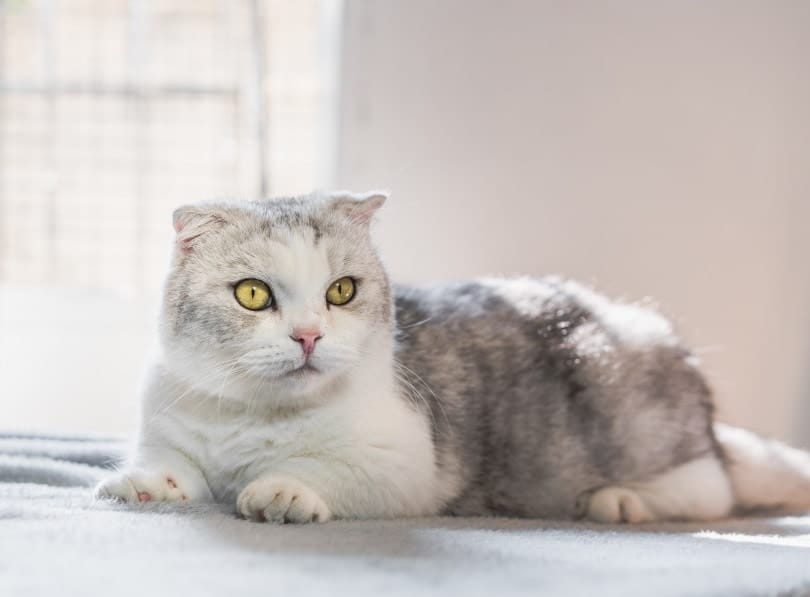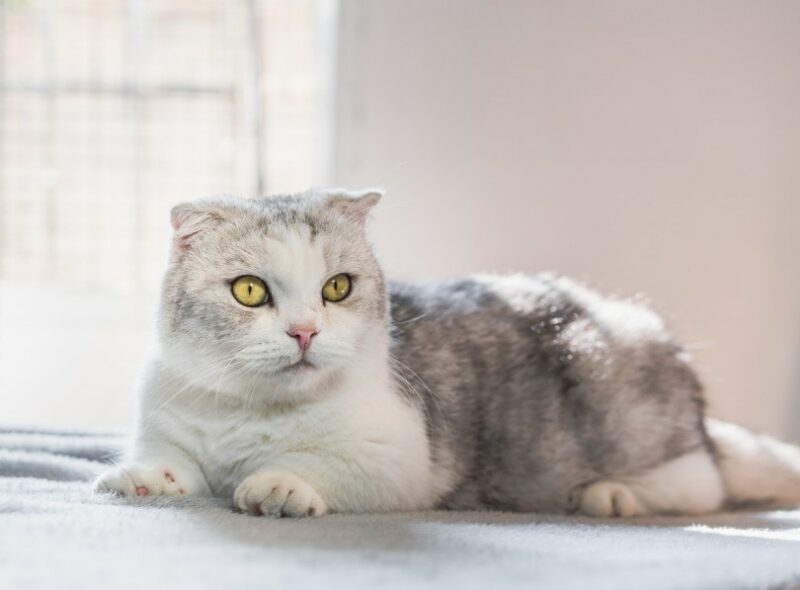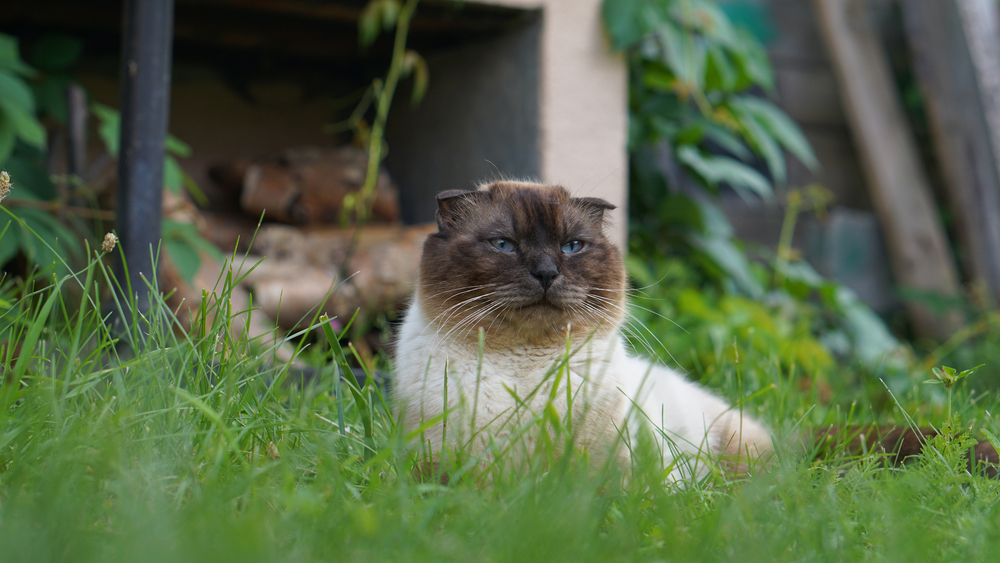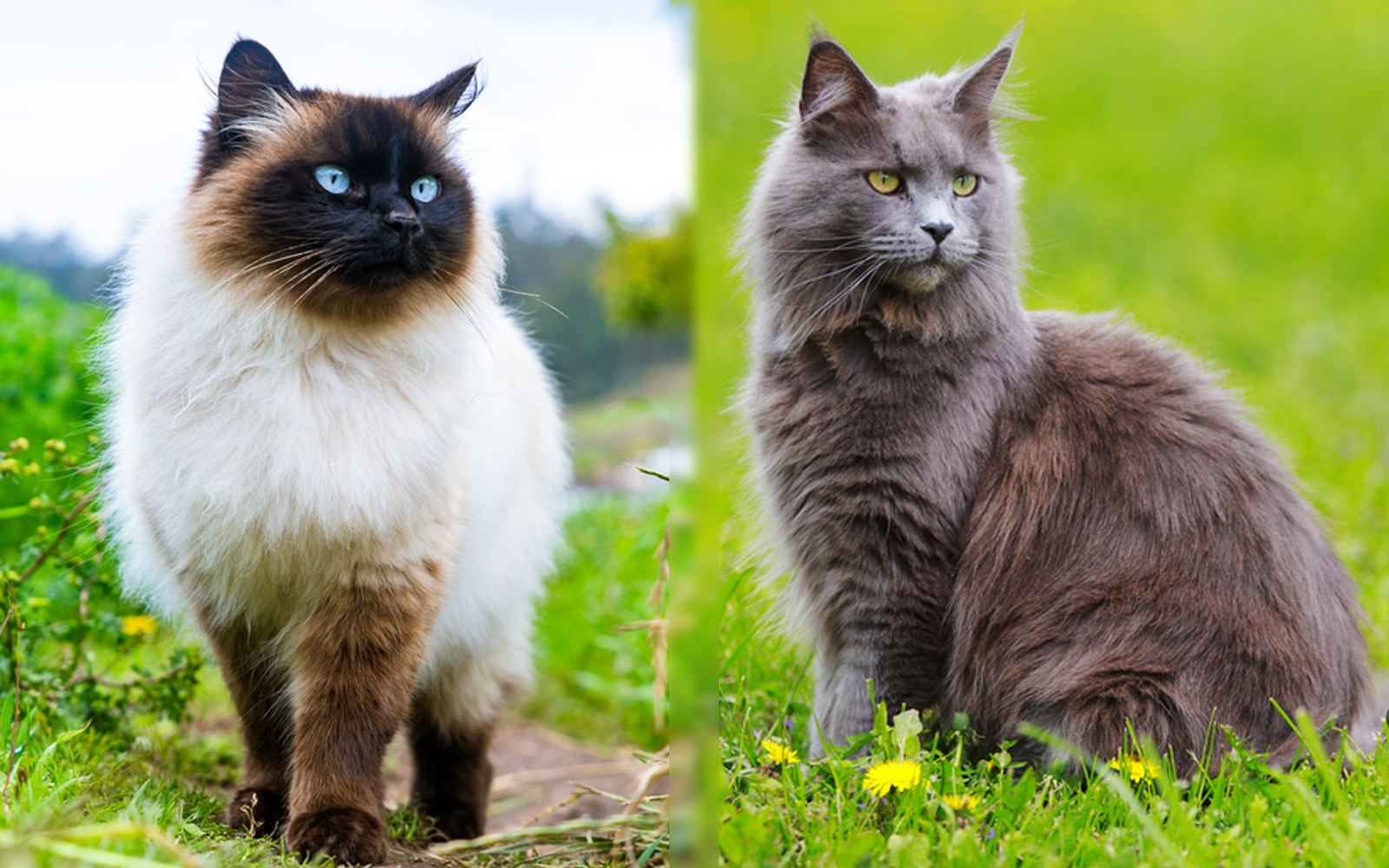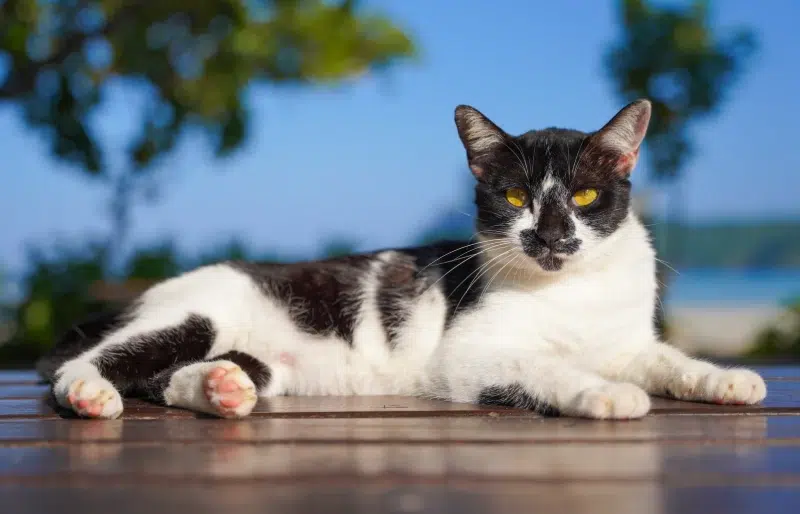Click to Skip Ahead
Because of their rarity, you might not have heard of a Kinkalow before, but their appearance likely makes you curious, and we can’t blame you! We think that this dwarf breed has so much to offer potential owners, and you’ll want to learn more. These short-legged little creatures are perfect for any cat-loving home.
Breed Overview
Height:
7–8 inches
Weight:
3–7 pounds
Lifespan:
12–15 years
Colors:
White, orange, black, tortoiseshell, gray, cream, calico
Suitable for:
Active families, multi-pet households
Temperament:
Playful, curious, adventurous, affectionate
They have a playful nature that any cat lover can appreciate. Plus, they have adorably tiny legs, and it will be fun to watch them bounce around your house playing. The only catch is that you may need more than a bit of luck finding one.

Kinkalow Cat Characteristics
3 Little-Known Facts About Kinkalow Cats
1. The Kinkalow Originated in the United States.
The Kinkalow cat breed was created by crossing American Curl and Munchkin genes. It’s a real wonder they aren’t in the home of every cat lover around. So, what do you get? This adorably cute folded-eared cat with tiny little legs.
2. Kinkalows Are Extremely Rare.
You’ll be lucky to find a Kinkalow kitten since they’re rare. If you’re fortunate enough to find a breeder specializing in Kinkalows, you might have trouble getting your hands on one. The waiting list for a kitten is likely pretty long, but if you’re patient, you may get lucky!
3. Kinkalow Cats Have an “Experimental Breed” Status.
The Kinkalow is considered a rare exotic breed. They are still in the experimental breed status from The International Cat Association. In our research, it doesn’t look like the breed is fighting for any other title for the time being.
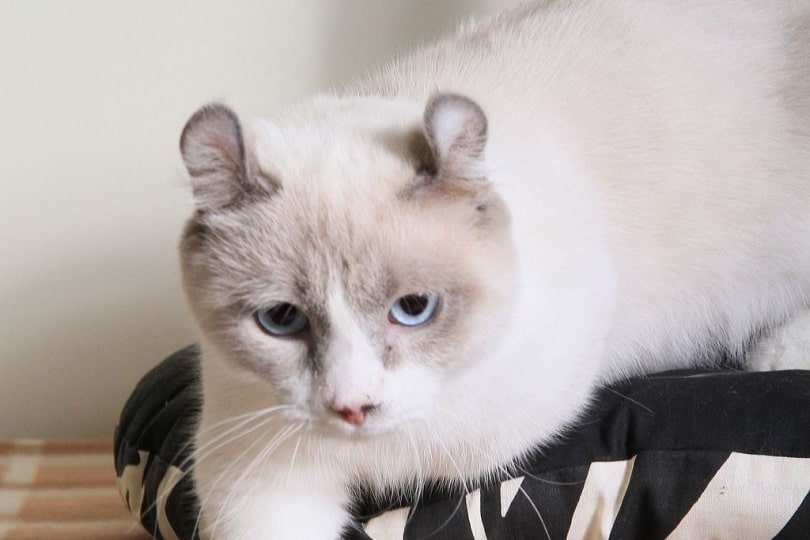
Temperament & Intelligence of the Kinkalow
Kinkalows have all the qualities most cat lovers adore—spunk, adventurousness, playfulness, intelligence, comical behavior, and affectionateness. Also, they are insanely cute and entertaining to watch when they play.
The Kinkalow is a real brainiac. They love to spend time with their owners, which makes it even more likely that they will want to learn from you. Since they are so clever, it makes them excellent candidates for special training if you’re willing to teach them.
Kinkalows are the life of the party. They want to be in on everything that happens, whether looking out a window at the neighborhood or nosing in on your family dinner. They will happily accompany you to the bathroom or sleep on your feet as you work from home in your office.
But don’t think that Kinkalows are shadow cats. They are pretty independent, and they’re good matches for owners who have a moderate work schedule. However, you’ll need several stimulating toys to keep them occupied during those alone hours.
Kinkalows are fierce, agile, and incredibly prey-motivated, making them excellent hunters. Providing surfaces to climb, scratch, and play will make all the difference—plus, it encourages healthy behaviors.
The Kinkalow is incredibly outgoing, greeting strange faces with no issues. They would much rather explore new experiences and people than run from them.
Are These Cats Good for Families?
Kinkalows are excellent pets for families and have very happy-go-lucky personalities. They usually match very well with all household members. However, some might pick their favorites, gravitating toward them more often.
They’re incredibly active and ready to play at any given time. Therefore, they can make unbeatable playmates for school-age children. However, Kinkalows and toddlers might be a little rough with one another, so supervision should always be a top priority.
The Kinkalow is only moderately vocal, and they don’t meow much to get their point across. Sure, leave the food bowl empty, and you might get an earful, but they are otherwise pretty calm.
Because they’re quiet, they’re ideal if you have close neighbors or roommates. However, because of their rarity and high cost, we recommend keeping the Kinkalow indoors.
Does This Breed Get Along With Other Pets?
You might have a Kinkalow that thinks they’re a dog. It is not unusual for them to hang out with you, come when they’re called, and even walk on a leash. Their social demeanor makes them awesome companions and playmates for other domesticated pets.
They pair very well with other cats and dogs because of their curiosity and desire to play. If you are gone often, they won’t turn down a playmate to cuddle and run around with while you’re away.
However, it’s best to keep them away from small animals. Reptiles, birds, and rodents are prey for Kinkalows and can spark their prey drive in an instant. Too many risk factors come from mixing predator and prey. So, even if it seems like your cat and hamster might be best friends, you might not want to find out.
Things to Know When Owning a Kinkalow:
Food & Diet Requirements 
Kinkalows don’t have any specific dietary restrictions, but it’s vital to prevent them from gaining too much weight. Because they have short legs, extra weight can put pressure on the spine, leading to joint issues.
It’s best to give them a protein-rich diet with all the essential vitamins and minerals and keep snacks to a minimum. Because your Kinkalow will be very active, they can easily maintain a healthy body weight with appropriate servings.
You can work with your veterinarian to determine the best diet for your cat. You can choose from various commercial diets, including dry kibble, wet food, semi-moist, homemade, and freeze-dried meals.
Exercise
It won’t be a difficult mission to persuade your Kinkalow to exercise. They are very energetic and need interactive toys, cat trees, and scratching posts. Since your cat only needs roughly 15 minutes of exercise daily, it should be no trouble.
Kinkalows enjoy playtime with their owners, and if you would like to partake in those activities, they would be more than happy to run around with you. Just be careful to protect your forearms; Kinkalows are skilled kickers.
Despite their small legs, Kinkalows enjoy strenuous exercise and need an outlet to expel their energy. If you do not teach them how to use a scratching post, they’ll sharpen their claws on the furniture and fabrics in your home.
Training
Kinkalows pick up concepts like using the litter box in the first few uses. They are very sharp, quick, and active. Because they are so in tune with their surroundings, they make very good candidates for advanced training like walking on a leash and learning tricks.
However, they’re independent and have a mind of their own. Sometimes, the habits you consider poor behavior are challenging to correct, even with training. For example, your Kinkalow might enjoy watching you cook dinner and refuse to leave the kitchen. They may not jump on the counter or pounce on your food, but it may be difficult to convince them to leave the area.
Although training them requires plenty of patience, it’s best always to use positive reinforcement methods whenever possible. Kinkalows can get their feelings hurt easily, and it’s best to avoid screaming at or scolding them. They are also highly food-motivated, so having treats is a must. It makes your life easier, and it builds trust with your cat.
Grooming ✂️
Grooming your Kinkalow should be no problem. They’re incredibly clean animals that never miss a good tongue scrubbing. They do most of the hard work for you and only need to be brushed a few times weekly. However, daily brushing is a great way to remove excess shedding and dander. Plus, it is a way to be affectionate to your cat, creating a bonding experience between you.
Kinkalows don’t need to be bathed often unless they get dirty, but if they need a bath, you can use hypoallergenic cat shampoo to reduce the risk of any chemical irritation. You’ll also need to brush their teeth at least a few times a week, inspect their ears regularly, and trim their nails every month.
Health Conditions
The Kinkalow can inherit health conditions from either parent; they’re vulnerable to the same conditions as the American Curl and the Munchkin cat. While generally healthy, the Kinkalow has its share of potential genetic and congenital health issues. The best way to keep them healthy is to ensure they maintain regular veterinary appointments at all stages of their life.
When your cat is a kitten, they will go to the vet quite frequently to ensure their growth is on par and that they have all necessary vaccinations. During their first year, you will also have the option to have your cat spayed or neutered and microchipped.
Male vs Female
Male Kinkalows are slightly larger and stockier than their female counterparts. They weigh a few pounds more but have the same bodily structure overall. When it comes to sexual gender differences, both males and females are capable of spraying to mark their territory when they reach maturity at six months. However, the behavior is common in males and typically solved by neutering.
Regarding personality, it’s hard to tell what you will get in either gender. However, males tend to be a little more vocal than their female counterparts. Females might be slightly more selective about who they spend their time with. No matter what, you’re sure to get an affectionate companion.
Final Thoughts
The Kinkalow is ideal for any family or single owner. The trick will be whether you can find one within a reasonable distance. They’re still in experimental status with the TICA foundation to this day. But if you are lucky enough to find one, you can expect a playful, excitable companion who loves you just as much as you adore them.
You might also like:
- 14 Rarest Cat Breeds in the World (With Pictures)
- Top 10 Largest Domestic Cat Breeds (With Pictures)
Featured Image Credit: Anciens Huang, Shutterstock

